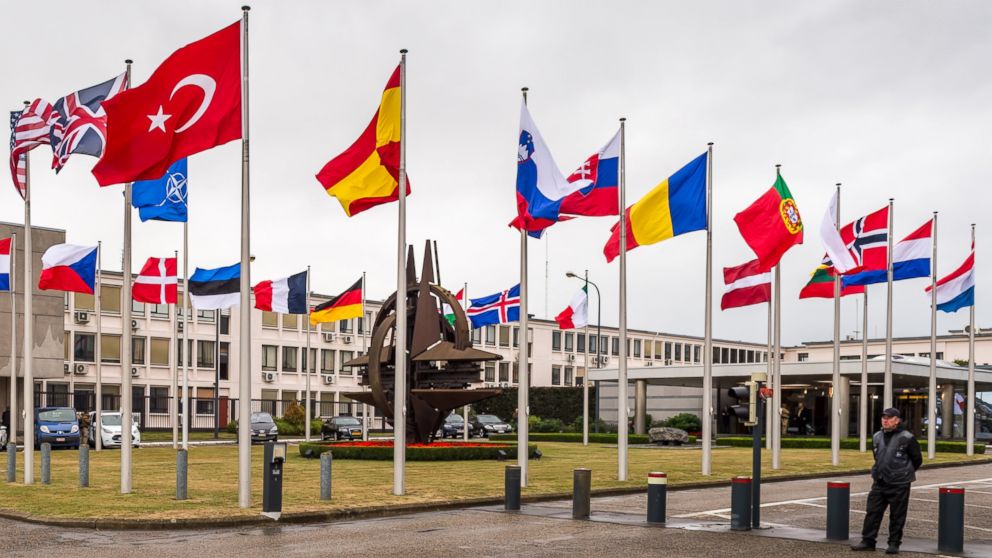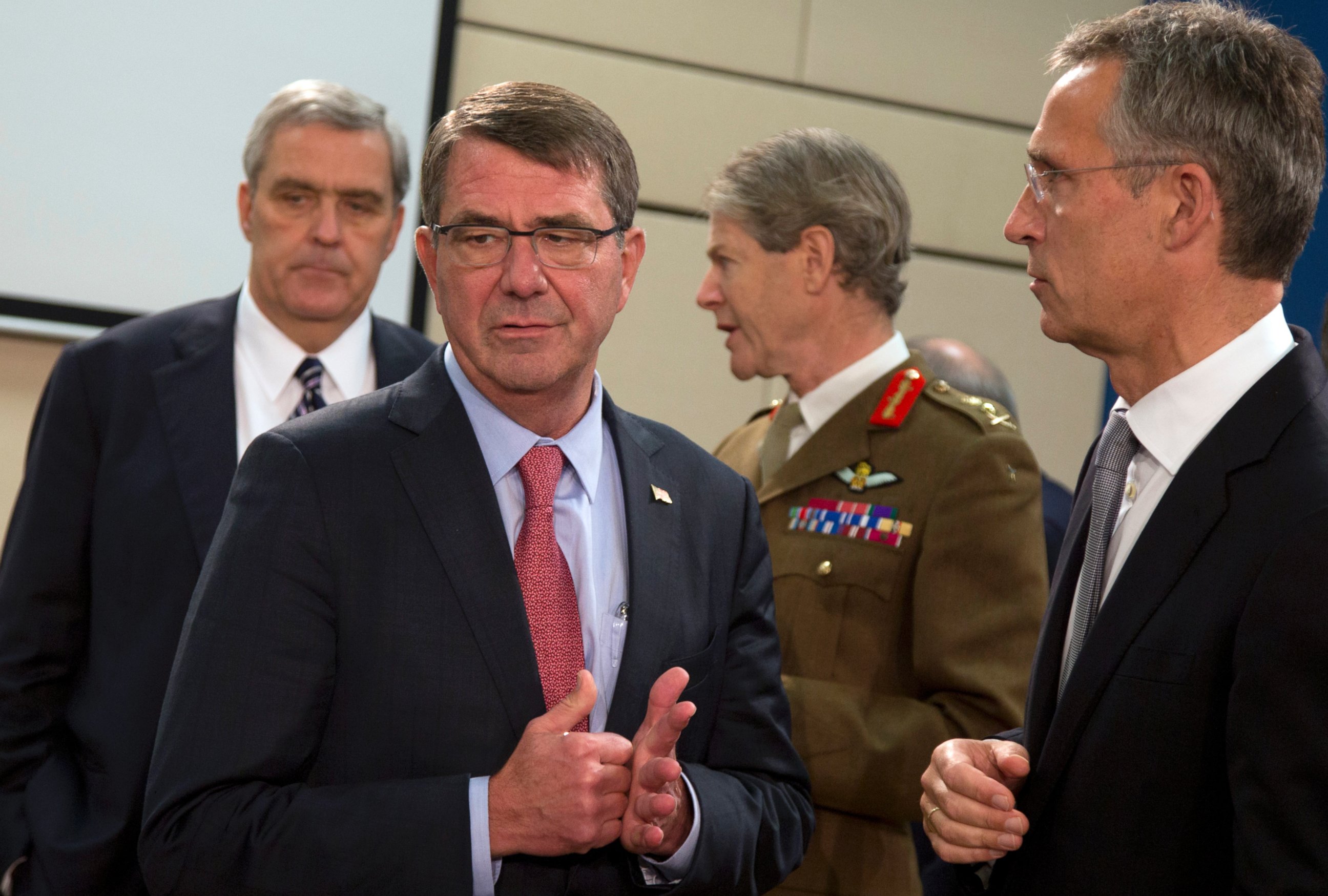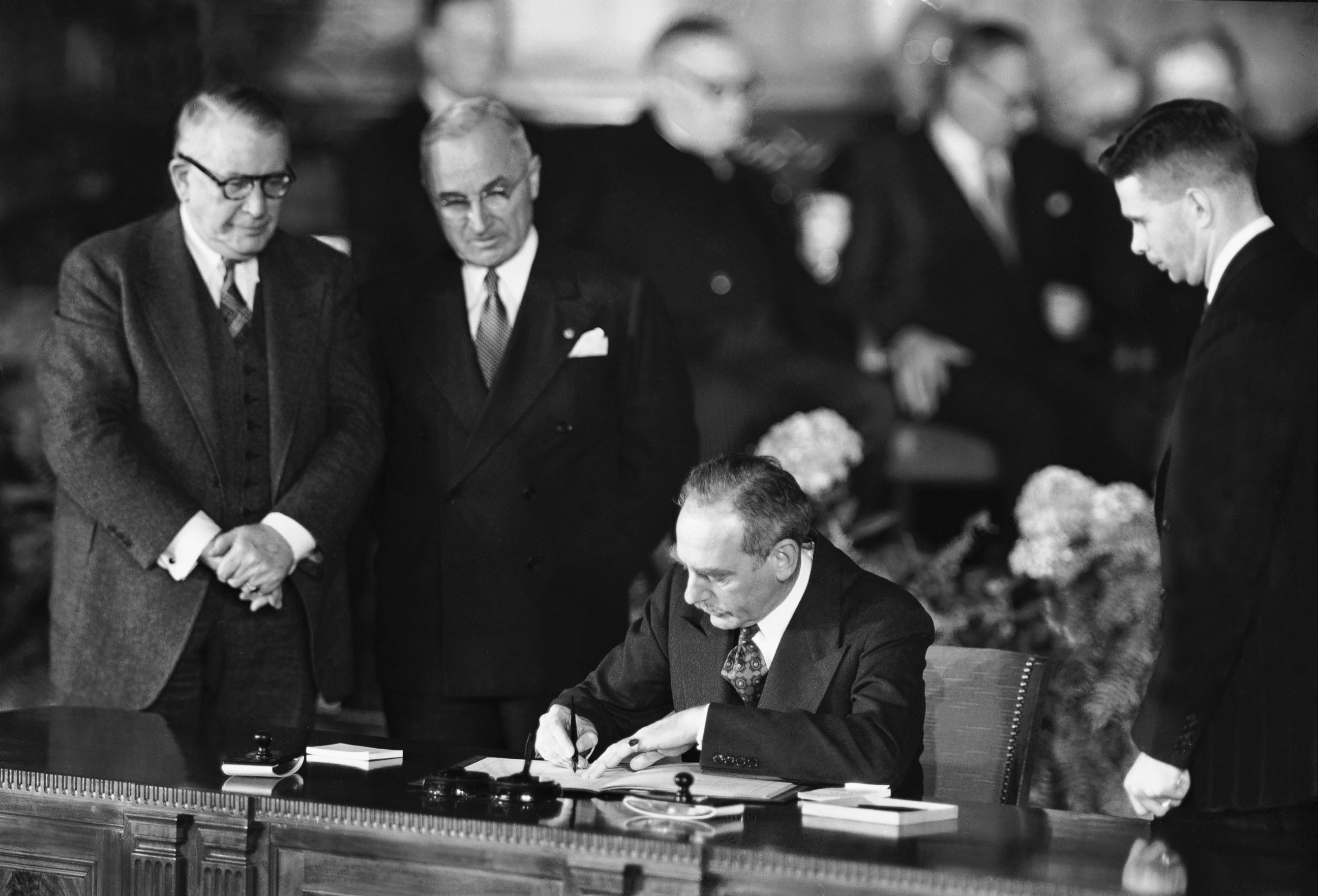Obama is Attending his Final NATO Summit: What You Need to Know About the Alliance
ABC News breaks down the alliance’s history, significance and criticisms of it.

— -- President Obama on Friday will attend his fifth and final NATO Summit in Warsaw, Poland, where he will hold national security talks and urge unity with European Union (EU) leaders in the wake of the United Kingdom’s vote to leave the EU.
So what exactly is NATO? ABC News breaks down the organization’s history, importance and criticisms leveled at it:
What Is NATO?
NATO is the North Atlantic Treaty Organization, a security alliance established in 1949 during the early days of the Cold War to counter Soviet aggression in Europe.
Now numbering 28 countries in Europe and North America, the alliance’s stated goal is to “safeguard the freedom and security of its members through political and military means,” NATO’s website reads.
The organization promotes “democratic values” and encourages member nations to work together on issues of defense and security to prevent long-term conflict.
When security disputes occur, NATO advocates peaceful resolutions. However, the alliance has guidelines on how military force can be used, outlined in Article 5 of the Washington Treaty, the founding treaty of NATO.
NATO adheres to a policy of collective defense, meaning an attack on one member is considered "an attack against all." The policy is outlined in Article 5 and has only been invoked once, after the Twin Towers in New York City were attacked on Sept. 11, 2001, and NATO members sent troops to Afghanistan.
After the Taliban fell in Afghanistan, a United Nations Security Council resolution established the International Security Assistance Force (ISAF), under NATO’s control, to stabilize the country. There were 1,044 non-U.S. NATO service members killed fighting in Afghanistan.
How Does NATO Work?
Headquartered in Brussels, Belgium, each member nation is represented by an ambassador who sits on the North Atlantic Council (NAC), the alliance’s political decisionmaking body. The council meets at least once a week and is chaired by NATO Secretary General Stoltenberg, who was previously prime minister of Norway.
When NATO political decisions entail a use of military force, NATO’s Military Committee is involved in the planning and resourcing of military elements needed for an operation. While NATO has few permanent military forces, member nations can voluntarily contribute forces when the need arises.
The Military Committee is made up of chiefs of defense of NATO-member countries; NATO's international military staff, who are the executive body of the Military Committee; and the military command structure, composed of Allied Command Operations and Allied Command Transformation.

Where Is NATO Operating Right Now?
Currently, NATO’s website lists five active operations and missions: Afghanistan; Kosovo; counterpiracy off the coast of East Africa; monitoring of the Mediterranean; and supporting the African Union.
Who Pays for NATO?
NATO recommends that each member country spend 2 percent of its gross domestic product (GDP) on defense.
Currently, according to the Wall Street Journal, only five members meet that benchmark: the U.S., Great Britain, Greece, Estonia and Poland.
The U.S. in 2014 spent more on defense than any other NATO country, more than 3.5 percent of its GDP. The U.S. spending accounts for approximately 75 percent of military spending by all NATO members, according to the Wall Street Journal.
What Is the History of NATO's Origin?
The North Atlantic Treaty was signed April 4, 1949, in the aftermath of World War II and rising geopolitical tension with the Soviet Union.
NATO’s website lists three purposes for its creation: “deterring Soviet expansionism, forbidding the revival of nationalist militarism in Europe through a strong North American presence on the continent, and encouraging European political integration.”

As the Cold War settled in, NATO stood in opposition to the Soviet bloc -- the communist nations allied with the Soviet Union.
In 1991, after the Soviet Union dissolved, NATO developed partnerships with former adversaries.
NATO ran its first major crisis-response operation in 1995 in Bosnia and Herzegovina after the Bosnian Civil War.
More recently, NATO responded to the Libyan crisis in 2011 by carrying out airstrikes to protect civilians under attack by the Gaddafi regime.
Who has criticized NATO?
Donald Trump, the Republican presumptive nominee, made headlines in April when he said he would be fine with NATO dissolving.
Trump has long complained that NATO-member nations have not contributed the funding or resources to the organization that the U.S. has.
“That means we are protecting them [NATO countries], giving them military protection and other things, and they’re ripping off the United States. And you know what we do? Nothing,” Trump told a crowd in Wisconsin in April. “Either they have to pay up for past deficiencies or they have to get out. And if it breaks up NATO, it breaks up NATO.”
Trump is far from the first to criticize other NATO members for contributing less than the U.S.
In 2011, Defense Secretary Robert Gates called the future of NATO “dim” if other nations didn’t increase their participation in the alliance's activities.
“The blunt reality is that there will be dwindling appetite and patience in the U.S. Congress -- and in the American body politic writ large -- to expend increasingly precious funds on behalf of nations that are apparently unwilling to devote the necessary resources or make the necessary changes to be serious and capable partners in their own defense,” he said.
Trump’s criticisms of NATO go beyond the contributions issue to the question of whether the alliance itself is still relevant.
"I think NATO is obsolete," Trump told ABC News in March. "NATO was done at a time you had the Soviet Union, which was obviously larger -- much larger -- than Russia is today."
GOP presidential candidate Ted Cruz and Democratic presidential candidate Hillary Clinton were quick to refute Trump’s remarks. The Pentagon also responded forcibly, with Peter Cook, the Pentagon's press secretary, saying NATO is “far from obsolete” and calling it “as relevant as ever right now in the current environment.”
NATO has long drawn criticism often during times of relative peace. After the fall of the Soviet Union, critics alleged that a European security alliance was no longer necessary to counter communist governments. But militant nationalism was still occurring, and soon NATO was put to the test with the Balkan Wars. Indeed, changing security threats have consistently pushed NATO to evolve over the past 60 years.
NATO’s website perhaps provides the best defense of the organization:
“Since its founding in 1949, the transatlantic Alliance’s flexibility, embedded in its original Treaty, has allowed it to suit the different requirements of different times. In the 1950s, the Alliance was a purely defensive organization. In the 1960s, NATO became a political instrument for détente. In the 1990s, the Alliance was a tool for the stabilization of Eastern Europe and Central Asia through the incorporation of new Partners and Allies. Now NATO has a new mission: extending peace through the strategic projection of security.
“This is not a mission of choice, but of necessity. The Allies neither invented nor desired it. Events themselves have forced this mission upon them. Nation-state failure and violent extremism may well be the defining threats of the first half of the 21st century. Only a vigorously coordinated international response can address them. This is our common challenge. As the foundation stone of transatlantic peace, NATO must be ready to meet it.”




